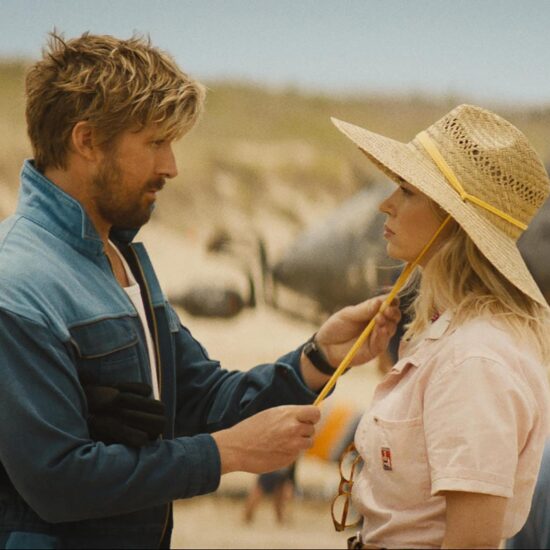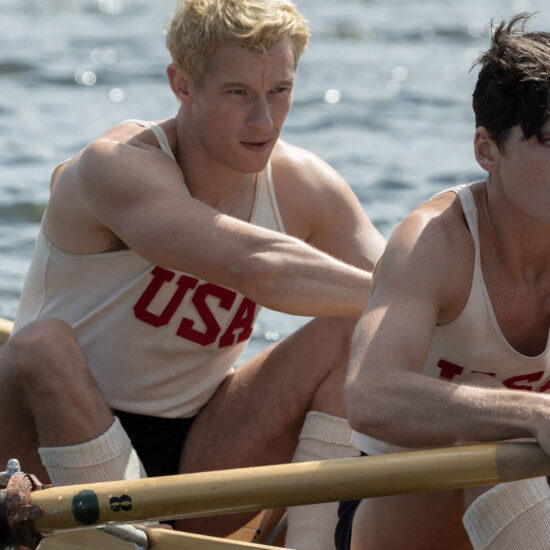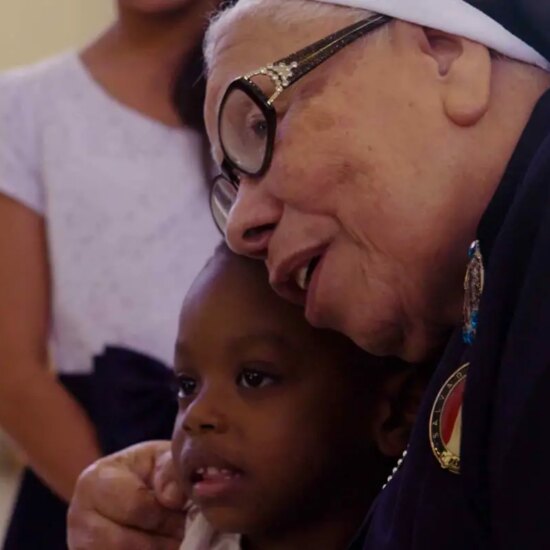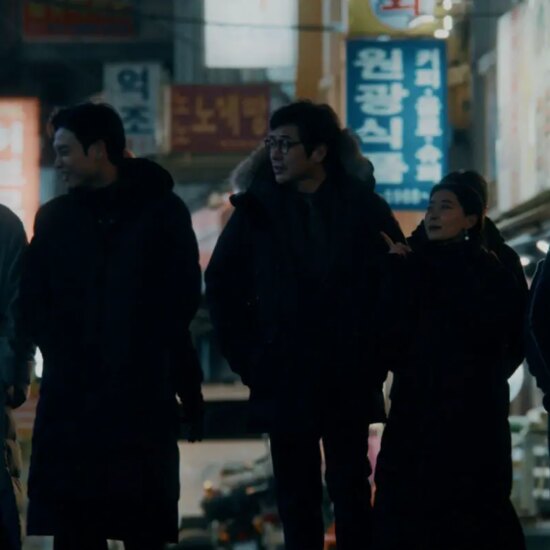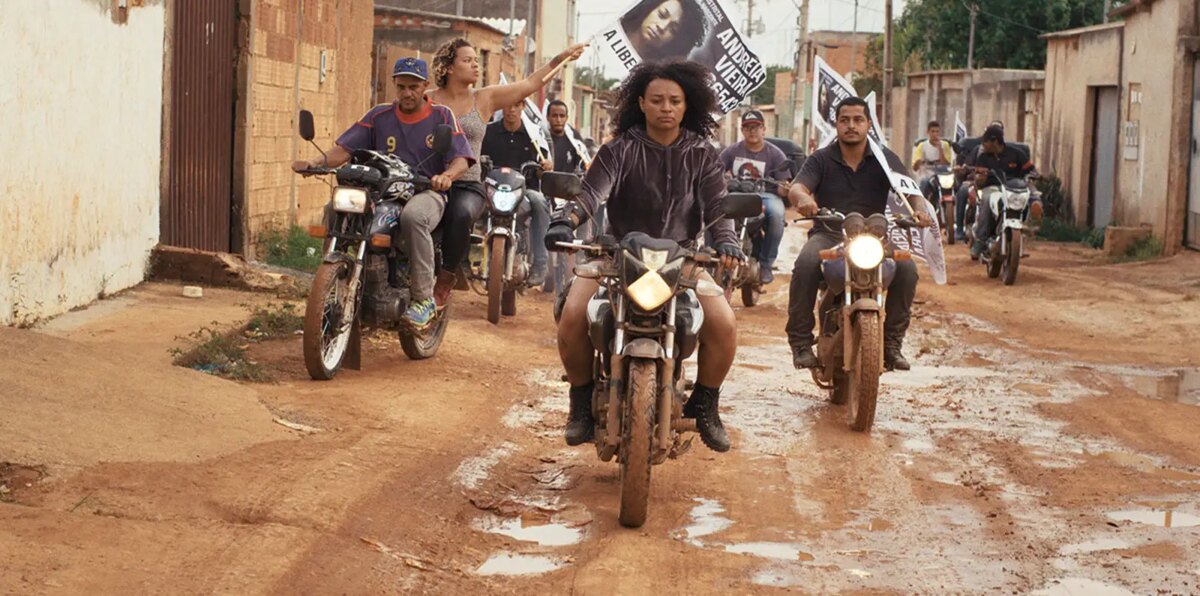
With a film like Dry Ground Burning, filmmakers Joana Pimenta and Adirley Queirós place a lot of trust in their audience. This film comes out of Harvard’s Sensory Ethnography Lab and isn’t dissimilar to films like Leviathan (2012). The distinctive aesthetic quality of these films is bound (and perhaps designed) to challenge viewers as the takes can be very long, and the action takes a long time to develop in many sequences. It’s definitely not for everyone, as it goes far beyond entertainment and serves as more of an ethnographic exercise. It’s observational cinema that has a foot in both documentary and narrative filmmaking.
Those who have seen the Brazilian film Bacurau from 2019 will recognize some similarities in Dry Ground Burning. Both feature a diverse cast of characters in a poor, arid community under threat from various segments of Brazilian society, including intensely nationalistic external forces. The majority of the film follows Léa, a tough and resourceful woman recently released from prison, as she assists her half-sister Chitara in illicitly selling oil to a motorcycle gang. Chitara is also campaigning to form a political party consisting of ex-cons in the hope of a better quality of life. All this is in the wake of Jair Bolsonaro’s shocking 2018 election.
“…illicitly selling oil to a motorcycle gang…seamless blend of documentary and fiction…”
We’re taken on a slow and meditative journey through the existence of the two sisters, and this includes extended sequences of refining oil, a church service, twerking on a bus, and a lot of Léa and Chitara chewing the fat while chain-smoking. The hypnotic quality of many of these sequences is fascinating, but I assuredly won’t be alone in positing that many are simply too long. The languid pacing would be challenging enough in shorter features. Still, with a bloated length of 153 minutes or so, even the most patient viewers will question the wisdom of dragged-out scenes featuring tertiary characters piling bricks or tossing lumber.
If one manages to push through, the reward is a seamless blend of documentary and fiction. All the characters are non-professional actors, and this intentional blurring of reality is unique in cinema. The sisters at the center of the film are fascinating, maintaining an edge that a professional actor simply couldn’t provide. One gets the sense that for much of the film, they aren’t really being directed; instead, they’re just living through their reality in front of the camera while still following a script. A shocking scene towards the end of the film brings us squarely into the world of documentary, but its poignancy makes it essential.
I want to recommend this to everyone, but the pragmatist in me tells me that many won’t have the patience, and Dry Ground Burning definitely requires it. There’s nothing quite like it, though, and fans of the Sensory Ethnography Lab should jump right into this mesmerizing journey through a Brazil we rarely see on camera. It’s a challenge that may ultimately be gratifying for the right audience — just make sure you have a comfy chair.









